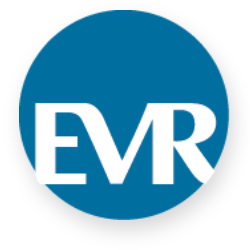The truth is, not everyone who visits your website will convert the first time or even the second, third or sixth. It can take as many as 25 touchpoints—web visits or otherwise—before a prospect becomes a resident. That’s why it’s crucial to leverage your website’s informational power to engage and guide seniors and their families through the decision-making process.
While some prospective residents may be interested and engaged with your offerings, there could be barriers like fear, uncertainty or simply a lack of information preventing them from taking the next step. This underscores the importance of having compelling, quality content on your website that can attract this audience.
Here are six powerful ways to use your website as a tool to bring that hidden audience into the light, turning them into leads and nudging them closer to conversion:
- Transparent pricing: It can be frustrating for seniors and their families to search for a suitable living option if they don’t know what the cost will be. By providing a clear price range or starting point, you can alleviate some confusion or ambiguity that may arise. Not everyone is willing to share personal information early in their search and may not want to fill out a form to get pricing information. Pricing transparency on your website can act as a trust-building factor.
- Comparative tools: A cost calculator can provide prospects with a side-by-side comparison of the price of senior living communities versus aging at home. This can serve as a compelling motivator for prospects to choose your community. The tool can help alleviate some of the financial concerns prospects have by providing them with a detailed breakdown of expenses, including a mortgage or rent, food, healthcare and other necessities and amenities. It can also help determine if the prospect meets the financial eligibility criteria for your community.
- Eliminate the unknown: Informative downloads can be an excellent way to provide resources that alleviate fear of the unknown and give answers to questions. You can offer materials such as “What to Expect” brochures highlighting amenities, dining menus, floor plans and campus maps. These downloads provide a comprehensive understanding of your services or products, creating excitement and reducing uncertainty.
- Fun and engaging content: The decision to move to a senior community requires serious consideration. However, adding a touch of amusement to your content can be a fun way to increase audience engagement. You can try incorporating interactive quizzes, such as “What kind of senior living personality do you have?” or “Which floor plan style suits you best?”, to entertain potential customers while highlighting your unique offerings. By gating the content, you can also ensure that you gather user information in exchange for quiz results.
- Resident stories: Including firsthand stories from current residents can provide invaluable insights into daily life within your community. Hearing from residents who are thriving can offer an authentic portrayal of what life is truly like on your campus, and their testimonials are more likely to resonate deeply with prospective residents and their families. By showcasing the positive experiences of current residents experiencing a variety of activities and amenities, you can build trust and credibility, ultimately guiding potential residents toward choosing your senior living community with confidence.
- Customer insights: Utilizing pre-tour surveys, questionnaires and other tools for gathering opinions and expectations can provide invaluable insights into prospects’ current lifestyles, preferences and needs. These resources serve as crucial assets for your sales team, empowering them to tailor their initial conversations with potential residents more effectively. Collecting valuable prospect information at every step, you’re armed with a deeper understanding of their desires and concerns so you can gradually guide them closer to the closing stage.
Collecting First-Party Data: Every Touchpoint Is an Opportunity
To effectively guide prospective residents through the senior living sales process, collecting first-party data is crucial. One effective method involves gating valuable information on your website or within marketing materials. This entails requesting visitors to provide their contact information, such as email addresses, in exchange for access. From here, you can build a database of leads and gain insights into their interests and preferences.
Providing high-value content not only showcases your community’s care and authority but also fosters trust while enabling you to gather invaluable contact information for ongoing communication with prospects. Offering content that caters to potential residents’ interests and concerns is paramount. Examples include comprehensive guides or e-books on topics like “Navigating Senior Living Options” or “Choosing the Right Community for Your Retirement,” as well as checklists or virtual tours.
To Make a Long Story Short…
The senior living sales process often unfolds over a substantial period, sometimes spanning up to two years or more. This extended timeframe presents numerous touchpoint opportunities. By consistently delivering valuable informational content, your website becomes a magnet, drawing prospective residents and family members back for further engagement. This “stickiness” leads to increased returns, more frequent interactions and actions that bring potential residents closer to conversion.
Seize the potential of each touchpoint to forge lasting connections, cultivate trust and steer seniors and their family members toward selecting your senior living community.











